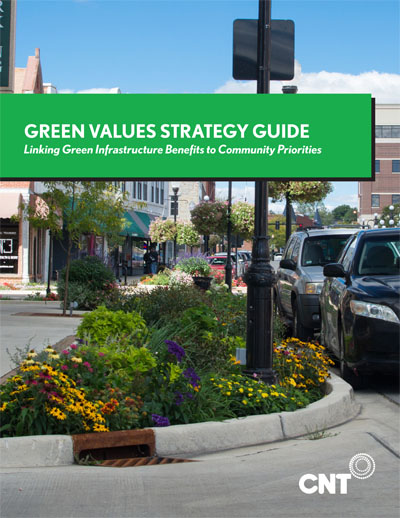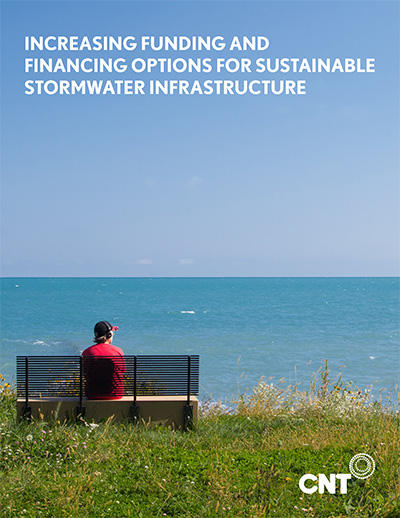The Green Values Calculator is designed to help plan green infrastructure solutions to prevent flooding for single buildings or larger neighborhood and community scale efforts. Below are resources that support and expand upon the Green Values Calculator.
Webinar recording from February 4, 2021
Speakers:
Jen McGraw, Director of Sustainability Innovation, CNT
Peter Haas, Chief Research Scientist, CNT
Michael Lampl, S.B. Friedman
Max Eisenburger, S.B. Friedman

View the methodology behind the Green Values Calculator.
View Methodology
This report shows Green Stormwater Infrastructure (GSI) adds value to homes. The Center for Neighborhood Technology (CNT) worked with SB Friedman Development Advisors to model the impact of GSI installations, such as rain gardens, pervious pavement, swales, and planters, on property sales data in two cities and found statistically significant higher sales prices of homes near GSI. These findings add to a growing body of research that shows that nature-based solutions to stormwater management provide many benefits in addition to flood control.
View Publication
Green stormwater infrastructure (GSI) is proven to help places become more resilient in the face of increasingly intense climate change impacts, while addressing other community priorities such as improved public health outcomes, increased economic development, and safe transportation infrastructure. CNT’s new guide “Linking Community Benefits to Green Infrastructure”, a reboot of our 2010 report “Value of Green Infrastructure Guide”, highlights the quantifiable ways that green stormwater infrastructure provides broad benefits to communities.
View Publication
Our country’s water infrastructure needs investment. However, funding and financing sources are growing increasingly competitive and communities are finding it difficult to secure adequate resources to make needed investments in their systems. In this report, CNT identifies innovative funding and financing mechanisms to support communities working to upgrade their infrastructure. We look to the energy and transportation sectors for funding and financing applications, take a closer look at the ways our state revolving loan funds can be better utilized, and explore how public dollars can be invested on private property to achieve distributed impacts and benefits.
View PublicationView additional research on green infrastructure at Center for Neighborhood Technology.
View Research & ToolsGreen infrastructure is a critical part of a sustainable city and region for a number of reasons: